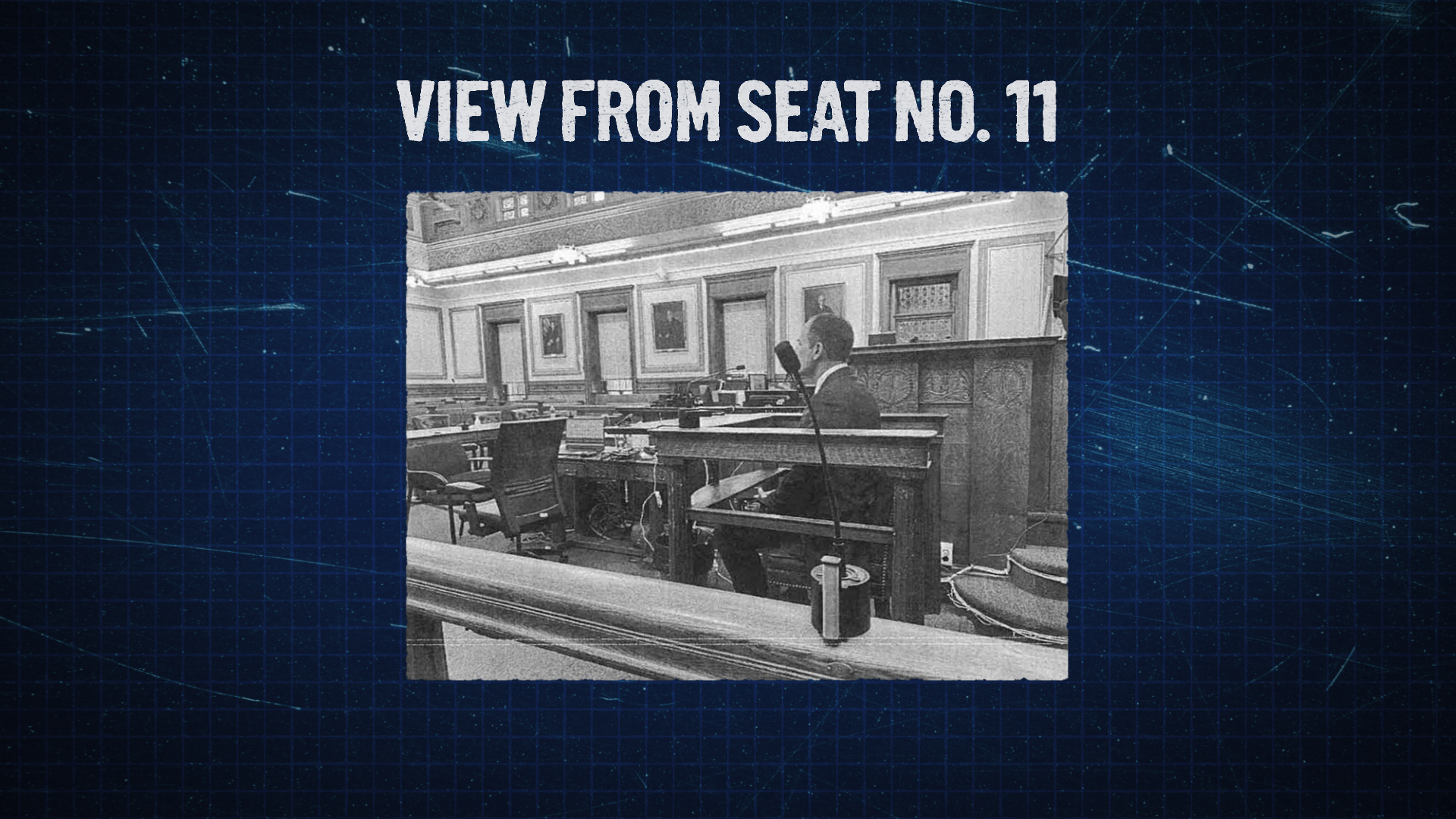Biting low temperatures are challenging even regions of New England that are used to winter extremes.
"I’m trying to be brave," said Jenna MacQueston of Arlington, Massachusetts, who was in Burlington, Vermont, for a short getaway Wednesday, drinking coffee to stay warm and leaving as little skin as possible exposed.
MacQueston was walking along Lake Champlain, which had a cloud of water vapor hanging over it, which formed when very cold air moved over the comparatively warmer lake.
This is just the start of a stretch of extreme cold for the Burlington area, which will see temperatures in the single digits or even negative territory through the weekend, according to forecasters.
"It’s going to be brutal," said Will Towne of Spectrum Youth & Family Services.
Spectrum, a non-profit, just partnered with the Roman Catholic Diocese of Burlington to open a new warming shelter inside the parish hall of St. Joseph’s Co-Cathedral.
The 10-bed shelter will give people in their teens and early 20s a place to spend the night when the temperatures become dangerous. The shelter will be open for the next few months.
Local
In-depth news coverage of the Greater Boston Area.
"With the weather turning, we’ve definitely seen an uptick in the number of youth that have needed a place to go," Towne said.
"It’s more than just keeping them warm, it’s also talking to them, feeding them, listening to their concerns, and enjoying time with them," said Rev. Lance Harlow, the rector of St. Joseph’s.
The intense cold is also sure to impact New Year’s Eve celebrations.
First Night Burlington is now trying to reassure people that if they have a button for the indoor entertainment at nearly 20 venues in the downtown district, it’s only a short walk outside between acts.
"One of the great things about being here is you don’t let the cold keep you inside," said Zach Williamson, the artistic director of First Night Burlington. "It’d be a really long winter if we didn’t do anything when it’s cold out."
The Vermont Department of Health and Vermont Department of Public Safety issued the following list of tips Wednesday to help people make it through the stretch of dangerous cold:
• Be a good neighbor: Check on older or disabled relatives, friends and neighbors to make sure they are keeping warm safely and have sufficient food and water.
• Make sure your car is properly winterized: Keep the gas tank at least half-full. Carry a Winter Emergency Car Kit in the trunk including blankets, extra clothing, flashlight with spare batteries, a can and waterproof matches (to melt snow for drinking water), non-perishable foods, windshields scraper, shovel, sand, towrope and jumper cables.
• Limit time outdoors: Minimize outside activities, particularly the elderly and very young.
• Consider your pets and limit their time outdoors
• Dress warmly and stay dry: Wear several layers of loose-fitting, lightweight clothing, rather than a single layer of heavy clothing. Wear a hat, mittens, and sturdy waterproof boots, protecting your extremities. Keep babies and older adults dry and in warm rooms.
• Eat and drink healthy: Well-balanced meals help you stay warmer. Drink warm fluids to maintain a healthy temperature. Alcohol and caffeinated beverages cause you to lose heat more rapidly.
• Avoid hypothermia and frostbite: Symptoms of frostbite include a loss of feeling and a pale appearance in extremities, such as fingers, toes, ear lobes or the tip of the nose. Hypothermia signs include shivering, exhaustion, slurred speech and in infants, bright red, cold skin. If symptoms are detected, seek medical help immediately and get to a warm place. Slowly warm the affected areas as you await medical assistance.
• Have sufficient home heating "fuel:" Check your heating supply, whether it’s oil, propane, wood, wood chips, etc. If you need information on heating assistance you can dial 2-1-1.
• Heat safely: If you lose your primary heat source, use only safe alternate sources like a fireplace, wood stove or space heater and ensure they are ventilating properly.
• Ventilate to prevent carbon monoxide poisoning: If you use a generator, ensure it is used outside, away from open windows, doors or air intakes. Exhaust from a generator or heating source can cause a buildup of Carbon Monoxide (CO) in the home. Carbon monoxide is a deadly, colorless, odorless, poisonous gas. CO poisoning can mimic flu-like symptoms such as headaches, dizziness, nausea and fatigue. Higher levels of exposure result in disorientation, drowsiness, unconsciousness and death. If you experience these symptoms leave the home and contact help. Test smoke alarms and Carbon Monoxide detectors.
• Ensure all heating vents are clear of snow or other obstructions: Blowing snow can block heating vents. Blocked vents can lead to CO buildup on the home.
• Be prepared: Have a well-stocked Winter Home Emergency Supply Kit that includes flashlights, portable radio, extra batteries, a first aid kit, bottled water and non-perishable food.
Those who need heating fuel assistance, housing, or other needs can contact Vermont 211 (http://www.vermont211.org) by phone by simply dialing 211 (24 hours a day, 7 days a week), or by texting your zip code to 898211 to reach a call specialist (8:00 a.m. – 8:00 p.m. Monday-Friday).



